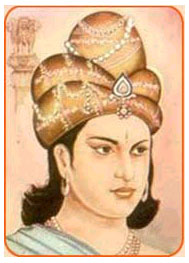ASHOKA THE GREAT
“Amidst the tens of thousands of names of monarchs that crowd the columns of history, the name of Ashoka shines, and shines almost alone, a star”. This glorious tribute flowed from the pen of British historian H. G. Wells.

This accolade and the historians celebrating Ashoka as one of the few “Greats” in world history are not because he was a ferocious warrior who annexed almost all of India but was directly attributable to his actions after he eschewed war and violence. One would be hard-pressed to find a parallel in history to this. The event that changed the heart of this ruthless warrior was the fateful “Kalinga war”.
This war with the Kalinga kingdom of the southeast resulted in the death of 100,000 people and injury or mutilation of 150,000. In disgust, Ashoka embraced Buddhism and henceforth observed that religion’s “Dharma” (“duty” in Sanskrit) and “Ahimsa” (nonviolence).
Ashoka sent emissaries to all parts of India and spread Buddhism in India and abroad. Tall stone pillars (which later became known as Ashoka pillars) carrying inscriptions extolling the Buddhist teachings were erected all across India. Atop these were statues of lions, bulls or elephants. One of these, at Sarnath sported four lions and 4 wheels of Dharma, atop a ‘Stupa’ of lotus; the former two have become icons in Modern India. The lions became the official emblem of the Republic of India and the wheel of Dharma occupies the central location in the Indian flag. (Refer to the segment of Indian flag for a description of the wheel).
Ashoka’s legacy also include building hospitals and rest houses across the nation and roads lined with shade trees and peppered with wells. His environmental and ecological concerns are as true today as they were in his days!